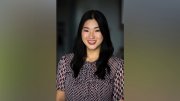In October 2021, Cecilia Zhou ’23 sat in her bedroom and painted her face black and white. She meticulously striped the colors across her chin, cheeks, and forehead, checking the angles in her camera. Zhou was not mimicking a zebra or a penguin: she was transforming herself into Bartolomeo Coriolano’s seventeenth-century woodcut print of a cupid.
During the pandemic, Zhou and her fellow Harvard Art Museums (HAM) student guides wanted to make sure people could still enjoy the collections. At first, they posted some short lectures, but people scrolled right by them. So, she built on the popular trend of makeup tutorials. During her careful emulation, she led viewers through a close-looking exercise: highlighting the artist’s choices while describing the piece’s historical context.
Though passionate about art history, Zhou does not limit her curiosities to a single discipline. During her time at Harvard, the recent graduate combined visual analysis with popular culture, social justice with geology, and art with religion.
A high school semester in Paris sparked her interest in art. After morning classes in a French art history course, the group would walk the city’s streets, often wandering through museums or historic neighborhoods—an immersive experience that sparked her love for art history. She continued studying the subject in high school and at the College, where she jointly concentrated in English and the history of art and architecture.
Zhou became an HAM guide as a sophomore, eventually rising to head guide, developing several tours. In “Visions of the Future,” she says she explored how “works of art envisioned, but also worked to bring about, ideal futures.” Her “LOL” tour investigated “humor and levity in art.” And in her “Making Faces” tour, she brought visitors to three portraits for which she created makeup tutorials.
Zhou was particularly surprised by how much an eighteenth-century French portrait of Marquise de Pompadour grew on her. “I begin the tour by admitting that this is the kind of work that I would have skipped past,” she says. “It looks like a boring, stuffy painting.” But she learned about the historical context—that the subject would hold a ritual, “a quasi-public performance of self-fashioning, in which a select audience would be able to sit in her dressing room and watch her get dressed and have her hair and makeup done.” Understanding the class implications of makeup made the piece come alive.
Zhou took art out of the museum, too. In spring 2022, she teamed with a fellow junior and a Graduate School of Design student to create an exhibition called “Inclusions,” which was part of the Presidential Initiative on Harvard and the Legacy of Slavery. The organizers drew the name from geology, where an inclusion is “a bit of matter that is materially distinct from stuff around it,” says Zhou. “Geologists use inclusions to determine important things about the formation of the rock…they’re like snapshots in time.” This exhibition was a snapshot in time, too, inspired by the national movement to take down Confederate statues. “If these are effectively monuments to injustice,” Zhou says, “what does the monument to justice look like?”
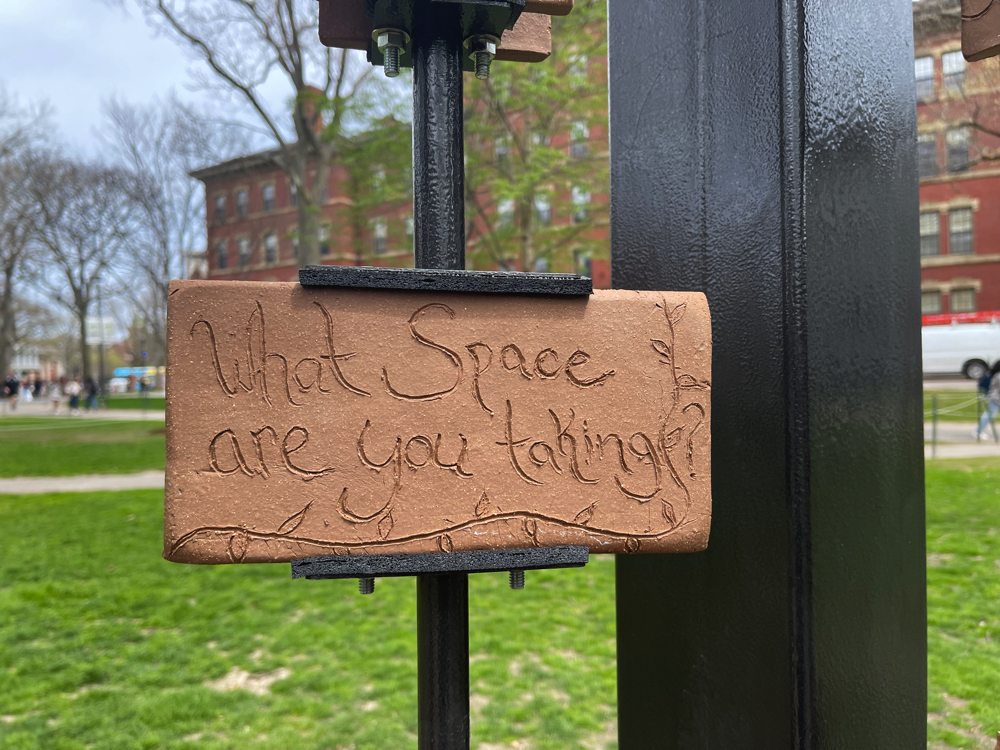
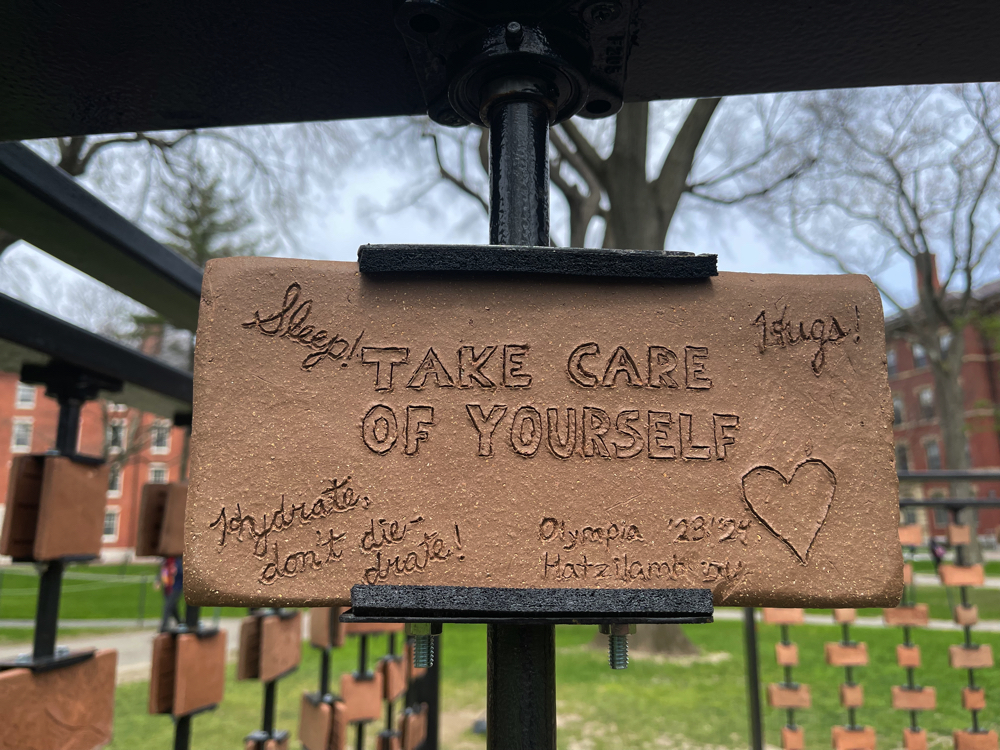
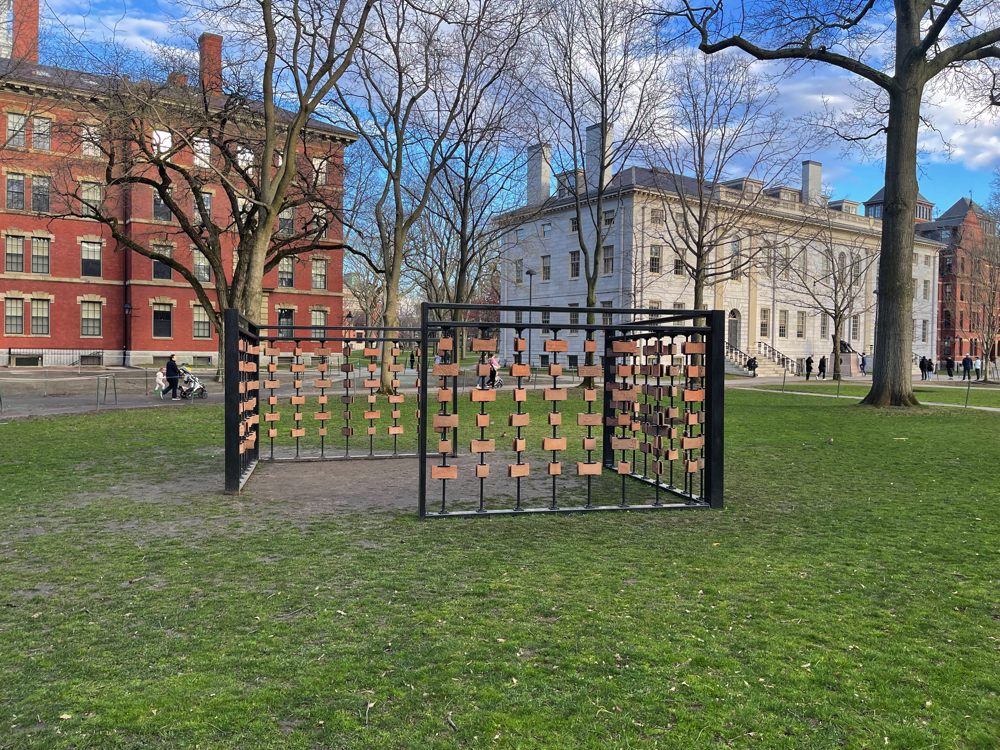
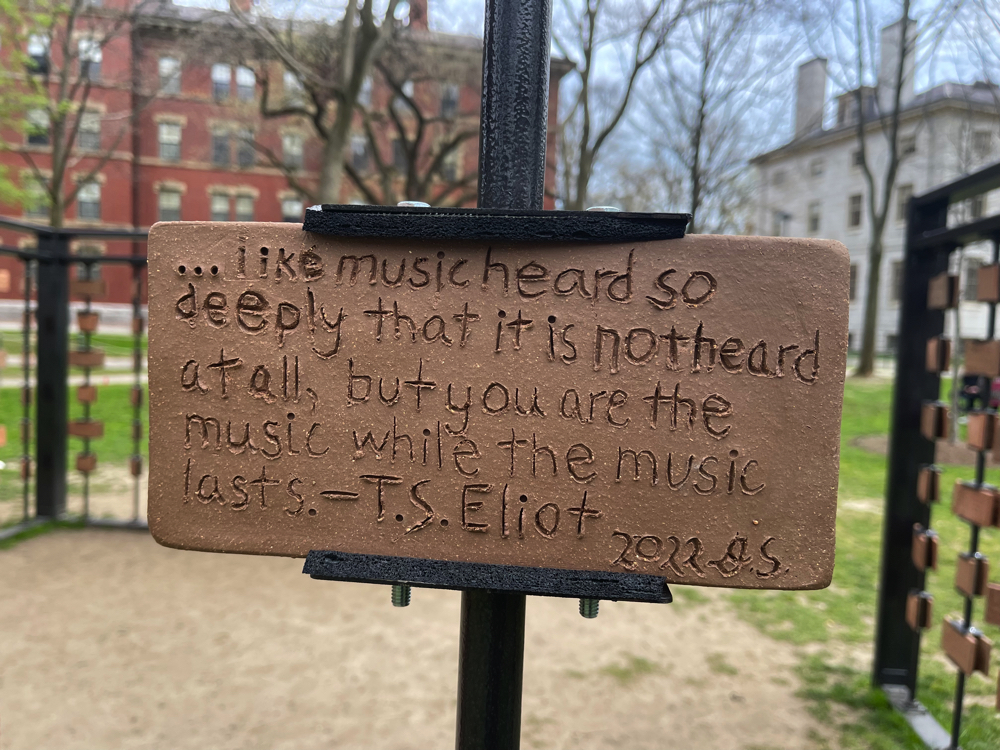
“Inclusions” on display in Harvard Yard in 2022 | PHOTOGRAPHS BY NIKO YAITANES/HARVARD MAGAZINE
“Inclusions” showcased 200 student-carved bricks in Harvard Yard. To decide what to write, participants responded to prompts like, “What should we remember about Harvard?” and, “How do you want Harvard to remember you?” During the month-long installation, visitors could touch and turn the bricks, walking through two L-shaped walls that Zhou says represented “pulling Harvard apart, flipping it inside out, and seeing what’s really in here.” (The bricks are now exhibited in Quincy House.)
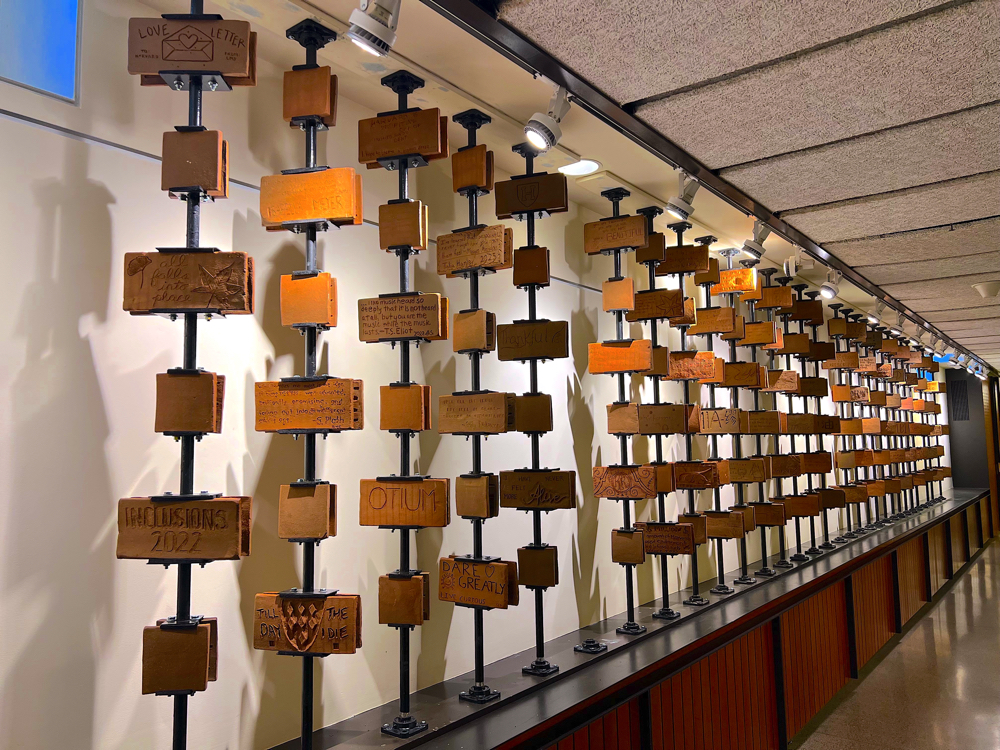
Sometimes, the geometry of art is more physical than metaphorical. For her thesis, “The Artist and the Arrest of Time, 1514–1616,” Zhou paired a sixteenth-century play (Doctor Faustus) and a Nuremberg sundial to investigate the concept of turning back time. Zhou found the sundial in Harvard’s Collection of Historical Scientific Instruments and was awestruck both by its design and its theological implications.
The refracting bowl, created by Georg Hartman, does not tell the proper time at first glance. “You fill it with water,” Zhou says, “and when you do so, the water refracts the shadow of the gnomon—the stick that casts the shadow—backward by 10 degrees, only then telling the right time.” Hartman’s device, she says, “re-enacts a miracle from the Old Testament in which God is said to have turned back a shadow on a biblical sundial by that same interval.” In her award-winning thesis, Zhou explored the sixteenth-century clash between science and religion, analyzing how each perspective explained this biblical miracle—and reckoned with a contemporary simulation.
Zhou will spend the next year continuing her thesis research at the University of Cambridge. She’ll home in on Hartman’s creation and study its role in seventeenth-century astronomical debates. “Thinkers on both sides of the debate over heliocentrism pointed to this [biblical miracle] as evidence of their positions,” she says. Other thinkers used the miracle to debate whether scripture could be read literally.
The multitalented educator, artist, and thinker is not yet sure what she’d like to do in the future. She may seek to become a museum curator, or perhaps pursue a career in intellectual property law. Wherever she goes, she’d like to stay involved with art. “It’s such a human form of meaning-making,” she says. “It forces you out of the paradigm of language, where every word means a thing…I think it does generate empathy.”
Additional reporting by Nancy Walecki
